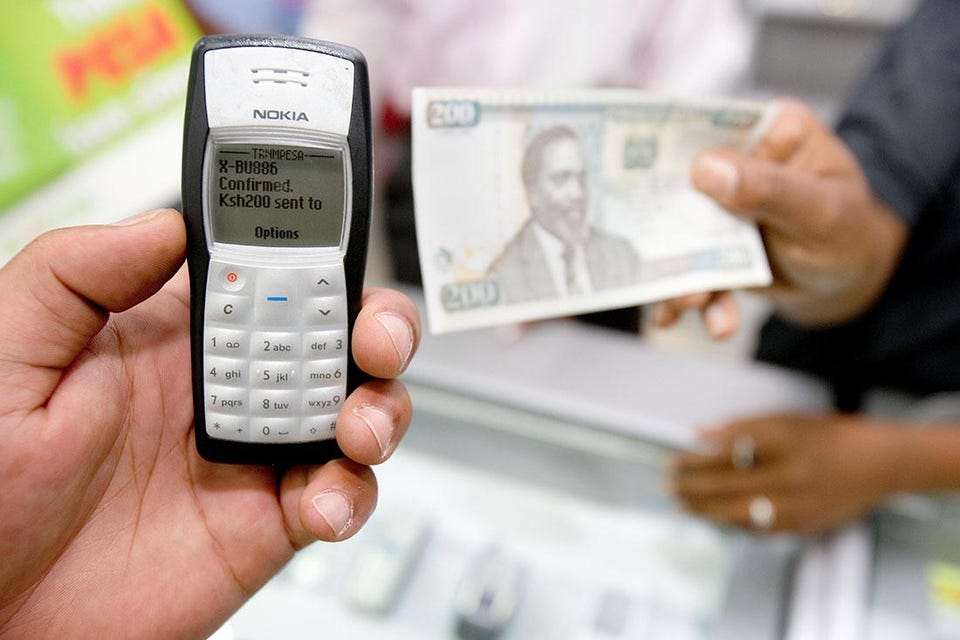During one of the lectures, Prof. Ting Li presented us with the following quote: ”Banking is necessary, but banks are not” by Bill Gates. This quote reminded me of a story about a company that was able to revolutionize banking in Kenya.
Back in 2006, Kenya was one of the poorest countries in the world. At that time, only one in seven people had a bank account, and for those who did, it was often too expensive to use it frequently. Less than a decade later, more than 84 percent of Kenyans, owning a simple mobile phone, are able to use their device to transfer money, pay at stores, pay their bills, and even save and loan money. All of this was made possible by a company that figured out how to ignite a multisided platform to massively reduce market frictions and to provide financial services to millions. The company is called Safaricom (telecom company) and it named its mobile platform M-Pesa (M for mobile and pesa is Swahili for money).
How does this platform work?
A Safaricom subscriber has to go to a CICO (Cash-in, cash-out) agent to set up an M-Pesa account. These agents are typically found in gas stations, post offices, small shops, and bank branches. The agent registers the subscriber, replaces the SIM card in the subscriber’s phone, and provides him with a PIN. To obtain money the subscriber hands cash over to the agent and then the agent uses the M-Pesa system to deposit e-money on the account of the subscriber. To send e-money, the subscriber needs to type in the number of the recipient, the amount, and his own PIN. Afterwhich the recipient can go to a local agent to withdraw the money in cash. That person enters the agent’s number, the amount of the withdrawal and her PIN. The agent will use the M-Pesa system once again, this time to reduce the balance in the recipient’s e-money account and give her the withdrawal amount in cash. Meanwhile, the sender’s e-money account is debited. The sender and receiver then receive SMS receipts for these transactions. M-Pesa receives and pays various fees during this process. The company does not charge senders a fee to put money in their account, but it charges a fee to send and receive money. On top of that, CICO agents get a commission for each newly signed up customer, as well as cash-in and cash-out transactions.
Despite the fact that this plan sounded good initially, it was rather challenging to get anyone to sign up to the platform. The need for cash-in and cash-out outlets compounded the M-Pesa start-up problem. CICO agents won’t register without senders and receivers moving money. Similarly, senders won’t sign up without receivers and agents. Eventually, M-Pesa was able to crack the code and figured out how to solve this problem.
M-Pesa was able to leverage the stores for its new service, as many stores in Kenya already partnered with Safaricom to sell airtime. It is important to have enough agents, but too much would result in a direct negative externality. Senders and recipients would of course appreciate having more agents around. This argued for attracting more agents and increasing the density of stores across the country. But if there were too many agents in a given area, they would compete for the same clients, which would reduce the agency’s profits and make it less attractive to provide the service. To ensure that stores had sufficient incentives to join and stay on the CICO network, M-Pesa chose to increase the number of agents based on the growth of senders and recipients. The company has also adopted a pricing model that encourages senders to recruit recipients, by dramatically increasing the fee of sending money to unregistered registries.
After its launch in 2007, M-Pesa became a success. The number of registered users in March 2015 reached 25.7 million (99% of adults), and the annual transaction volume reached 45 percent of GDP in 2014. M-Pesa expanded it services and as of late 2015, it consisted of four intersecting two-sided platforms: a sender-receiver money-transfer platform, a registered-CICO agent platform, a registered merchant-registered user platform (Lipa Na M-Pesa) and a financial services-to-registered-user platform (M-Shwari).
The M-Pesa platform also has its cons, for example, the reliance on internet connectivity, vulnerability to fraud, and the potential siphoning of money out of Africa into the West, since Safaricom is 40% owned by the UK multinational Vodafone. But at least the platform was able to do something that bank branches were not able to, it brought financial inclusion to the country. Current technologies like blockchain technology and cryptocurrencies may have the potential to improve this system and reduce costs.
Evans, D. S., & Schmalensee, R. (2016). Matchmakers: The new economics of multisided platforms. Harvard Business Review Press.
Johnson, L (2020). The Pros and Cons of M-Pesa. The Three es Africa. Retrieved from **https://thethree-e.com/articles/the-pros-and-cons-of-m-pesa
Runde, D. (2015). M-Pesa And The Rise Of The Global Mobile Money Market. Forbes. Retrieved from https://www.forbes.com/sites/danielrunde/2015/08/12/m-pesa-and-the-rise-of-the-global-mobile-money-market/?sh=667fbe835aec

